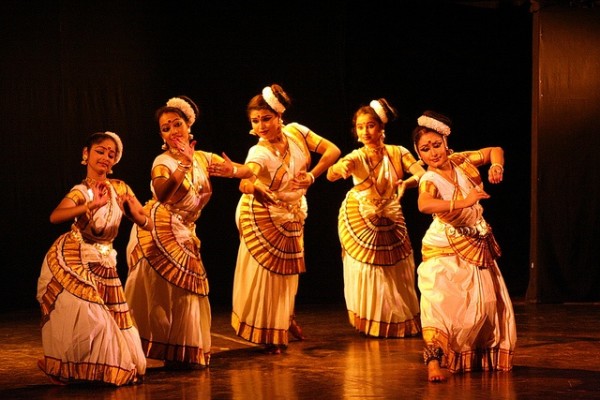Mohiniyattam The Classical Dance of India
Mohiniyattam
Mohiniyattam is one of India’s eight classical dance performances in Kerala. Mohiniyattam is derived from the words Mohini, which means a beautiful girl, and Attam, which means dance. So cla, social dance is a lovely feminine style with the singing flow of the body movements. First of all, classical dance was the tradition of the Devadasi system, later developed as a classical dance.
Origin
According to a Puranic story, once Lord Shiva fell into danger from the demon Bhasmasura. Then Vishnu appears as Mohini to save Lord Shiva. Then Mohini danced, made Bhasmasura perform as her, and finally infused the monster to kill himself. Mohini performed this classical dance, so the dance is called Mohiniyattam. Therefore, Lord Vishnu founded this classical dance Mohiniyattam since Devadasis used to achieve this classical dance in temples.

The Female Dancers:
This classical dance focuses mainly on feminine moods and emotions. The dedicated body movements and subtle fad expressions are more feminine, which suits women’s performance. The theme of Mohiniyattam is based on love. During the dance, the love is expressed with suggestive abhinaya, subtle gestures, rhythms, and footwork. In the dance, approximately 40 basic movements, which tatkal.
Decoration:
The dancer’s dress is also involved in the traditional concept. The dancers wear white saris embroidered with bright golden brocade at the edges. The dancer’s hair was gathered in a bun and decorated with jasmine flowers. Wear gold jewellery, including necklaces, bangles, wristbands and anklets. The dancers follow Hasta Lakshanadeepika, which describes gestures by the hand, palm and fingers. These are called Mudras. The lyrics are vocalized with a combination of Malayalam and Sanskrit.
History of Mohiniyattam Dance:
The dance Mohiniyattam history is found in the texts of the eighteen century. Classical dance flourished during the Maharaja Swathi TIrunal region in the 19th century. Maharaja Tirunal, the great lover of art and dance, composed many musical and vocal arrangements to enrich the dance and attract the spectators. The musical and vocal accounts provide musical background for the Mohiniyattam dancers.
Modern Time Developments:
The great poet Vallathol established the Kerala Kalamandalam in 1930 and promoted the Mohiniyattam dance. He did great work recodifying classical dance to bring enormous popularity among other classical dances.
The classical dance episodes are adopted from the Indian epic story. Veena and Mridangam are the main musical instruments used during the dance performance. The dancer performs according to the music and vocal sound, moves the hands and shows the facial expressions rhythmically and appeases the audience.